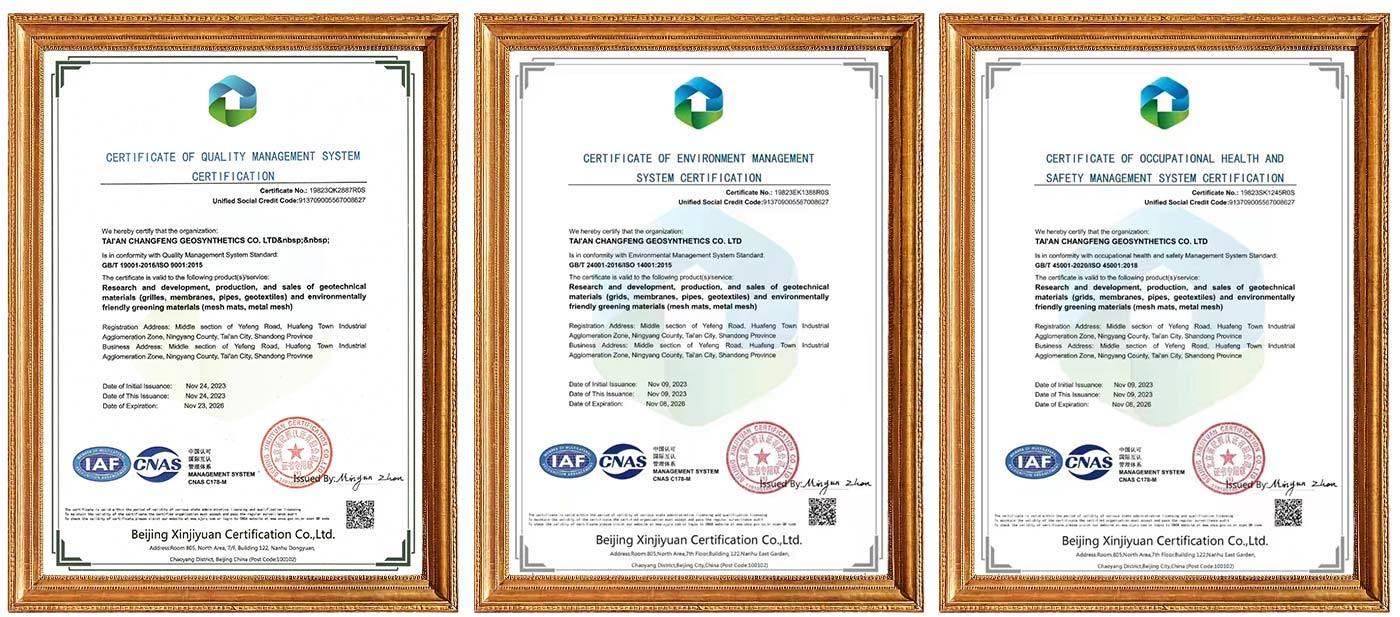
Ocean engineering Geocomposite
Subclassification:
Geocomposite
Key words:
Geocomposite
Email:
WhatsApp:
Product Details

Composite geosynthetics are composite materials composed of soil and one-of-a-kind auxiliary materials. It is normally composed of soil and bolstered or expanded materials (such as fibers, bentonite, clay minerals, chemical additives, etc.), and is made through mixing, compaction, solidification and specific processes.


Composite geotechnical elements have greater than one points and advantages. Firstly, it has awesome tensile and compressive strength, which can beautify the mechanical residences of soil, beautify its bearing capacity, seismic and liquefaction resistance. Secondly, composite geotechnical resources can beautify the engineering residences of soil, such as bettering its impermeability, anti slip and stability, decreasing soil contract and lateral deformation. In addition, composite geotechnical elements have right sturdiness and corrosion resistance, and can cope with exclusive environmental stipulations and engineering requirements.
The software program fields of composite geotechnical resources are very extensive. In integral engineering, it can be used for soil reinforcement, groundwork treatment, slope security and specific engineering projects. In transportation engineering, it can be used in flooring engineering such as roads, railways, and airport runways. In hydraulic engineering, it can be used in duties such as embankments, dams, and revetments. In environmental engineering, it can be used in initiatives such as landfills and waste disposal sites. In addition, composite geotechnical supplies can moreover be utilized in a couple of fields such as mining engineering, tunnel engineering, and marine engineering.
In summary, composite geotechnical substances are an critical civil engineering fabric with a couple of elements and utility advantages, which are of fantastic significance for bettering the engineering ordinary overall performance of soil and enhancing the stability of engineering structures.

| Property | unit | BC50/D200 | BC63/D200 | BC70/D200 | BC80/D200 | Test Standard | |
| Geocomposite specification | |||||||
| Hydraulic conductivity(MD) |
M²/s | 2.8×10-3 | 3.2×10-3 | 4.0×10² | 5×10-3 | ASTM D4716 | |
| Puncture | KN/m | 0.17 | 0.17 | 0.17 | 0.17 | ASTM D7005 | |
| Resistance | |||||||
| Core Material Geonet Specification | |||||||
| Thickness | mm | 6.3 | 7.0 | 8.0 | 9.0 | ASTM D5199 | |
| Density | g/cm³ | 0.94 | 0.94 | 0.94 | 0.94 | ASTM D1505 | |
| Carbon Black Content | % | 2 | 2 | 2 | 2 | ASTM D1603 | |
| Tensile strength (MD) | KN/m | 8.0 | 10.0 | 12.0 | 14.0 | ASTM D7179 | |
| Geotextile Specification | |||||||
| Unit weight | g/m2 | 200 | 200 | 200 | 200 | 200 | |
| Geotextile type | Continuous filament non-woven geotextile | ||||||
Honor

MESSAGE



